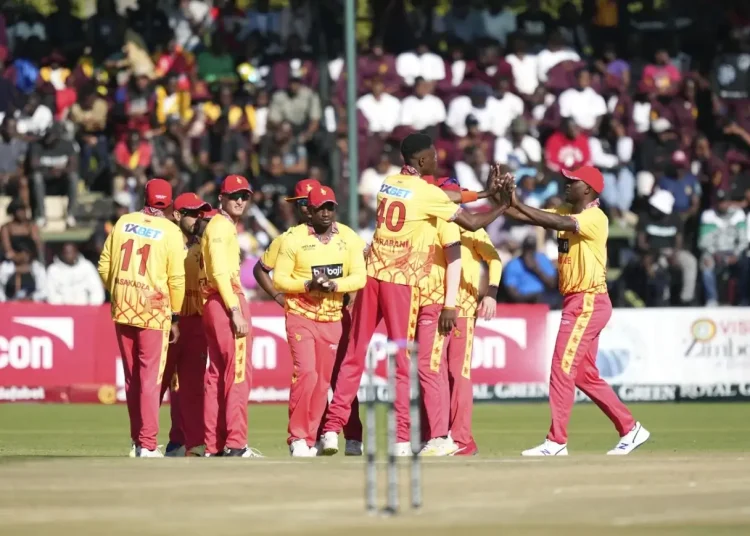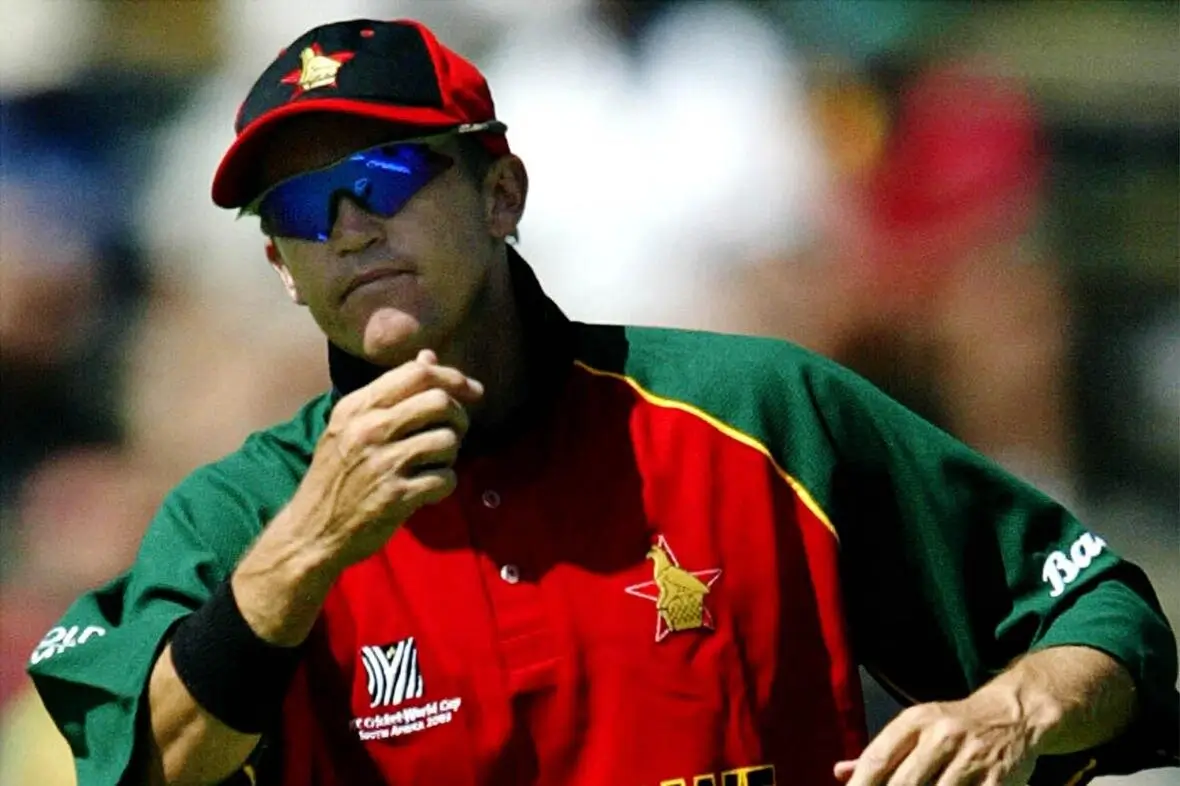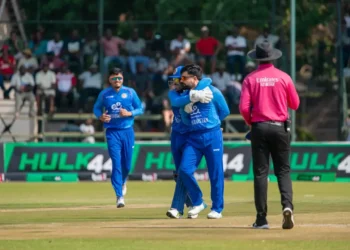Zimbabwe cricket was once a beacon of hope in the sport’s global landscape. By 2003, it stood on the brink of greatness, only to plummet into obscurity. What triggered this dramatic fall? This article explores the collapse through a lens rarely discussed: the human cost and grassroots impact. It began with a defiant protest during the 2003 World Cup, spiraling into political upheaval and economic ruin.
We’ll uncover stories of players who rebelled, communities that suffered, and a sport left in tatters. Drawing from sources like the BBC and Wikipedia, we’ll reveal how Zimbabwe cricket became a casualty of a nation’s turmoil. Can it ever recover? Let’s dive into this untold saga.
A Nation’s Pride Before the Fall
Zimbabwe cricket shone brightly in the 1990s and early 2000s. They stunned Australia in the 1983 World Cup and earned Test status in 1992. Players like Andy Flower and Heath Streak became household names. Flower was a batting maestro, averaging over 50 in Tests. The 1999 World Cup saw them topple giants like India and South Africa.
Cricket wasn’t just a game; it united a diverse nation. Schools and clubs thrived, producing talent that rivaled the best. As per ESPN, Zimbabwe’s fielding was world-class, a testament to their discipline. But this golden era hid a fragile foundation. Political tensions simmered, threatening to unravel it all. The 2003 World Cup would expose these cracks wide open. Though Zimbabwe upset India in 2024 at Harare, they did not look sharp in skills.
The Rebels Who Shook the World
In 2003, Andy Flower and Henry Olonga donned black armbands during a World Cup match. They protested the “death of democracy” under Robert Mugabe’s rule. It was a bold move that stunned fans and players alike. Their statement, as reported by the BBC, drew global support but local fury. Olonga faced treason charges and fled Zimbabwe. Flower retired, ending a stellar career.
This wasn’t just a symbolic act; it sparked a rebellion. Other players began questioning the system. The team’s spirit fractured, and the fallout was immediate. Their protest marked the beginning of the end for Zimbabwe cricket’s glory days.
Politics That Poisoned the Pitch
Robert Mugabe’s regime cast a dark shadow over Zimbabwe cricket. The Zimbabwe Cricket Union became a political tool, riddled with corruption. Administrators were appointed for loyalty, not competence. Heath Streak, the captain, clashed with the board in 2004 over team selections. He was sacked, triggering a strike by 15 senior players. As Wikipedia notes, this left the team in disarray.
Matches became lopsided, with Zimbabwe suffering crushing defeats. Political interference didn’t just hurt the players; it alienated sponsors and fans. Cricket, once a source of pride, turned into a battleground. The government’s grip choked the sport’s growth, leaving it gasping for survival.
Grassroots Caught in the Crossfire
The political chaos didn’t spare grassroots cricket. Schools and rural clubs lost funding as the economy tanked. Equipment became scarce, and coaches left for better prospects abroad. Young players, once nurtured in thriving academies, were abandoned.
A government report from 2005 highlighted the decline in sports facilities nationwide. Cricket’s diversity faded as white Zimbabweans, a key demographic, emigrated en masse. The talent pipeline dried up fast. Without a strong base, the national team had no hope. This ripple effect turned promising youngsters into forgotten dreams.
Economic Ruin and Empty Stands
Zimbabwe’s economic collapse in the 2000s hit cricket hard. Hyperinflation soared, rendering player salaries worthless. The Zimbabwe Cricket Union struggled to pay its staff, as per ESPN reports. Stadiums like Harare Sports Club fell into disrepair. Fans couldn’t afford tickets, leaving stands eerily empty. The crisis drove talent overseas, with players seeking stability elsewhere.
Domestic leagues like the Logan Cup lost their edge. Investment vanished, and development programs stalled. Cricket became a luxury in a nation fighting to survive. Economic ruin didn’t just weaken the team; it erased the sport’s presence from daily life, which can be seen in the Indian Team dominating CT 2025.
The Talent Drain That Broke the Team
The economic mess fueled a massive talent drain. After Flower Brothers and Olonga left, others followed. Tatenda Taibu retired at 22, fed up with threats and instability. Players moved to England, South Africa, and beyond. The team fielded rookies against seasoned opponents, leading to disasters.
In 2006, they scored a measly 35 against Sri Lanka, an ODI low. As BBC reported, the loss of experience was crippling. Domestic cricket couldn’t fill the gap. The talent drain wasn’t just numbers; it was the loss of mentors and leaders. Zimbabwe cricket paid a steep price for its broken system, unlike the Australian team, which dominated in the ICC.
ICC’s Cold Shoulder and Isolation
The International Cricket Council couldn’t ignore Zimbabwe’s chaos. In 2004, the team withdrew from Test cricket amid poor results. The ICC stepped in again in 2019, suspending Zimbabwe for government meddling. This cut funding and international exposure. Players lost chances to grow against top teams. The suspension, detailed in ICC records, reflected deeper issues.
It wasn’t just punishment; it was isolation. Cricket nations moved on, leaving Zimbabwe behind. The team’s ranking plummeted, and morale hit rock bottom. ICC’s actions were meant to force change, but they deepened the sport’s exile instead. Recovery seemed a distant dream, and the godfathers of cricket were lost.
A Comparison with Other Struggling Nations
Zimbabwe wasn’t alone in facing cricketing woes. Kenya and Canada also faded from prominence. But their declines differ. Kenya lacked infrastructure, but not political interference. Canada struggled with funding, yet retained stability. Zimbabwe’s mix of corruption, poverty, and exodus was unique. As an academic journal from 2010 notes, no other nation saw such a rapid talent loss tied to governance.
Kenya still produced stars like Steve Tikolo, while Zimbabwe’s pipeline collapsed entirely. This comparison shows how politics amplified Zimbabwe’s fall. Other nations stumbled; Zimbabwe crashed.
Flickers of Hope Amid the Rubble
Zimbabwe cricket hasn’t given up yet. The 2007 T20 win over Australia sparked optimism. Restructuring in 2009 revived domestic leagues. New talents like Blessing Muzarabani emerged, shining in brief stints. Harare Sports Club got a facelift, signaling intent. The ICC resumed funding under strict oversight, curbing corruption. Yet challenges linger. Players still strike over unpaid wages, as ESPN reported in 2022.
Political stability remains elusive. The team hovers mid-tier in global rankings, far from its peak. These flickers of hope show resilience, but the road back is long. Zimbabwe cricket fights to reclaim its lost legacy like South Africa.
Conclusion
Zimbabwe cricket’s collapse after 2003 is a story of broken dreams. It fell from a golden age to a cautionary tale. Political poison, economic despair, and talent loss fueled the descent. The 2003 protest lit the fuse, exposing a rotting system. Grassroots-level cricket like India was lost in Zimbabwe, and the ICC’s isolation sealed the fate.
Yet, small victories hint at revival. Recovery demands more than wins; it needs a stable nation. As per Wikipedia, cricket reflects Zimbabwe’s broader struggles. This saga isn’t just about sport—it’s about people caught in chaos. Will Zimbabwe cricket rise again? Only a united effort can answer that.
















